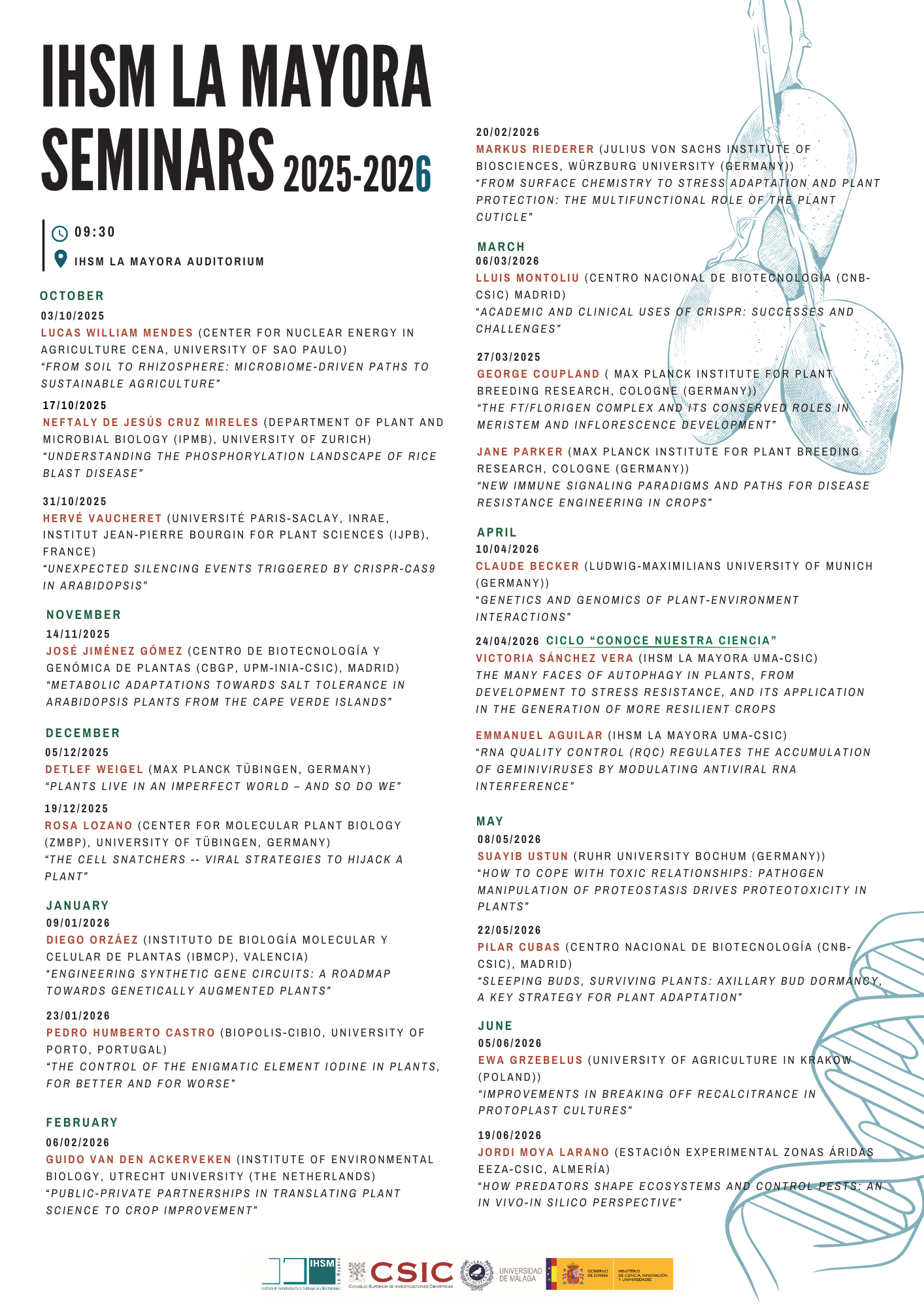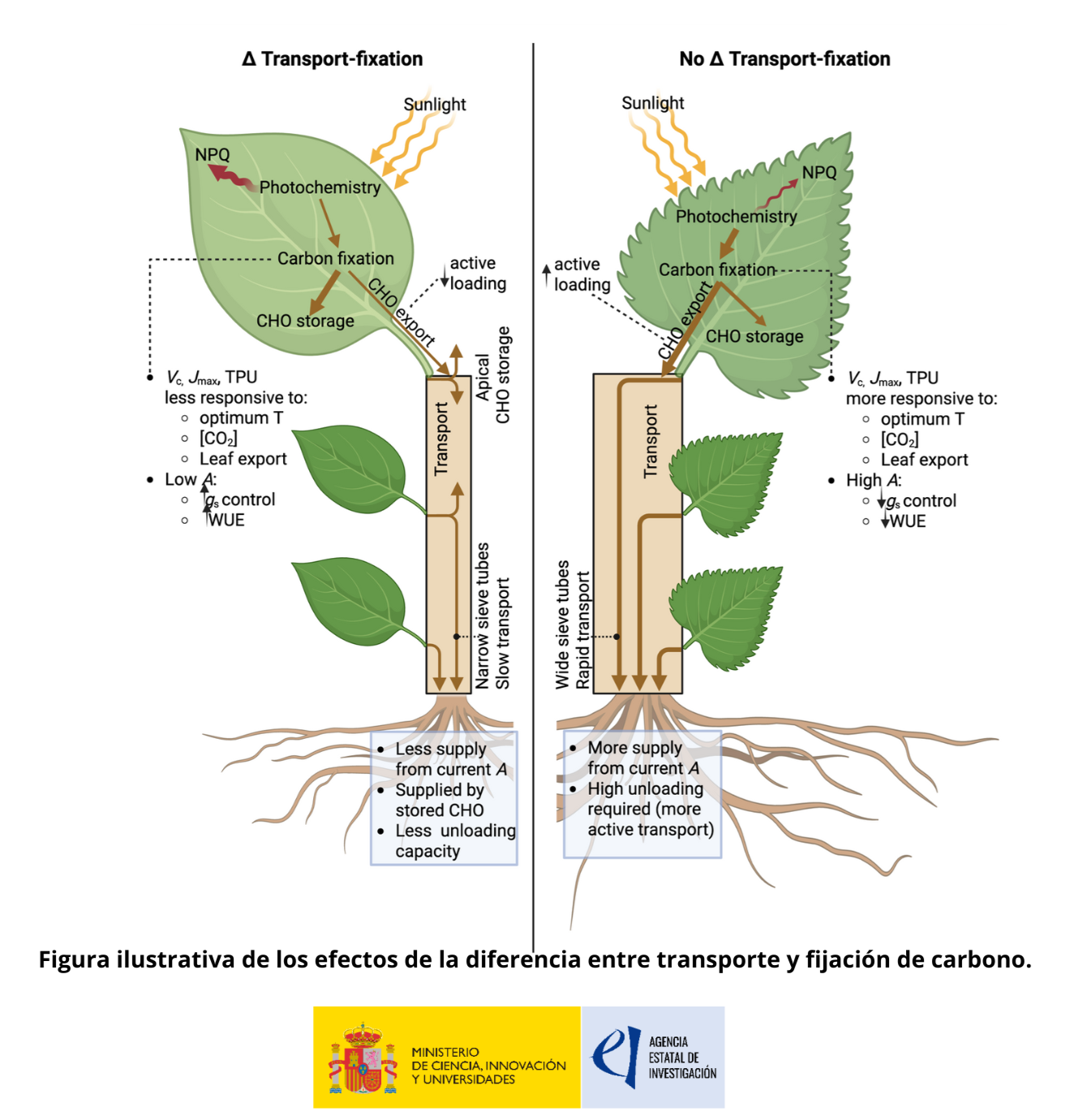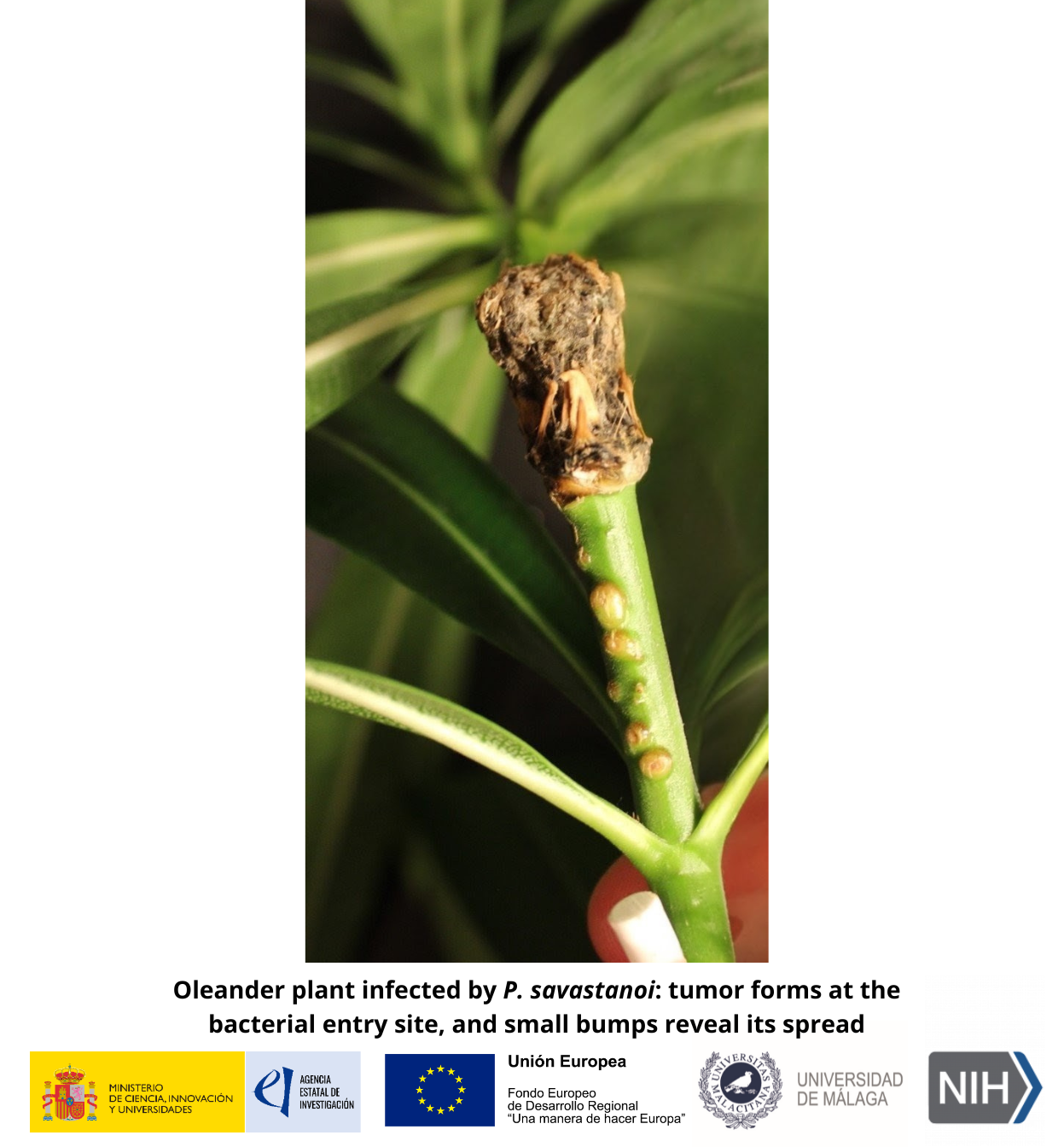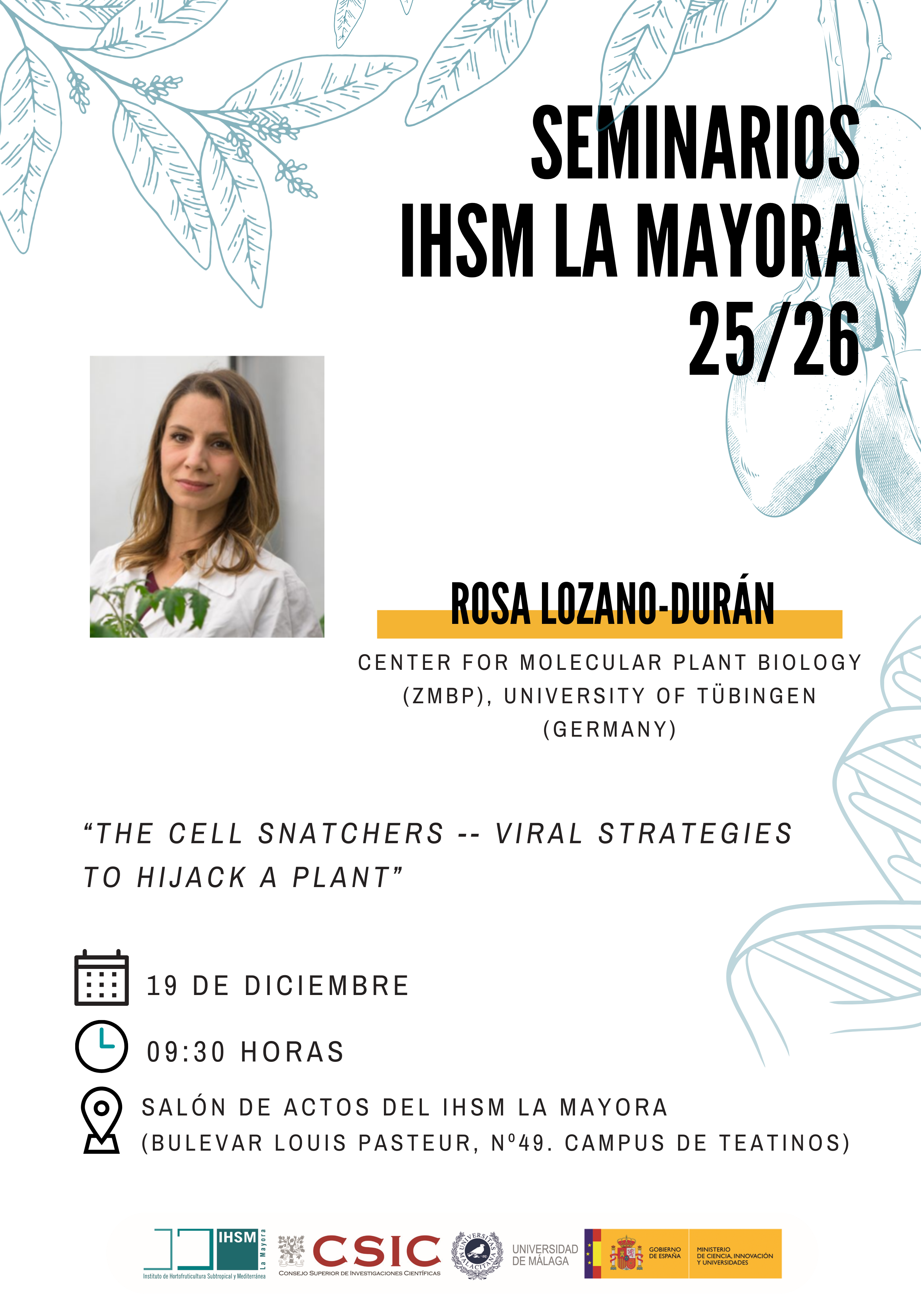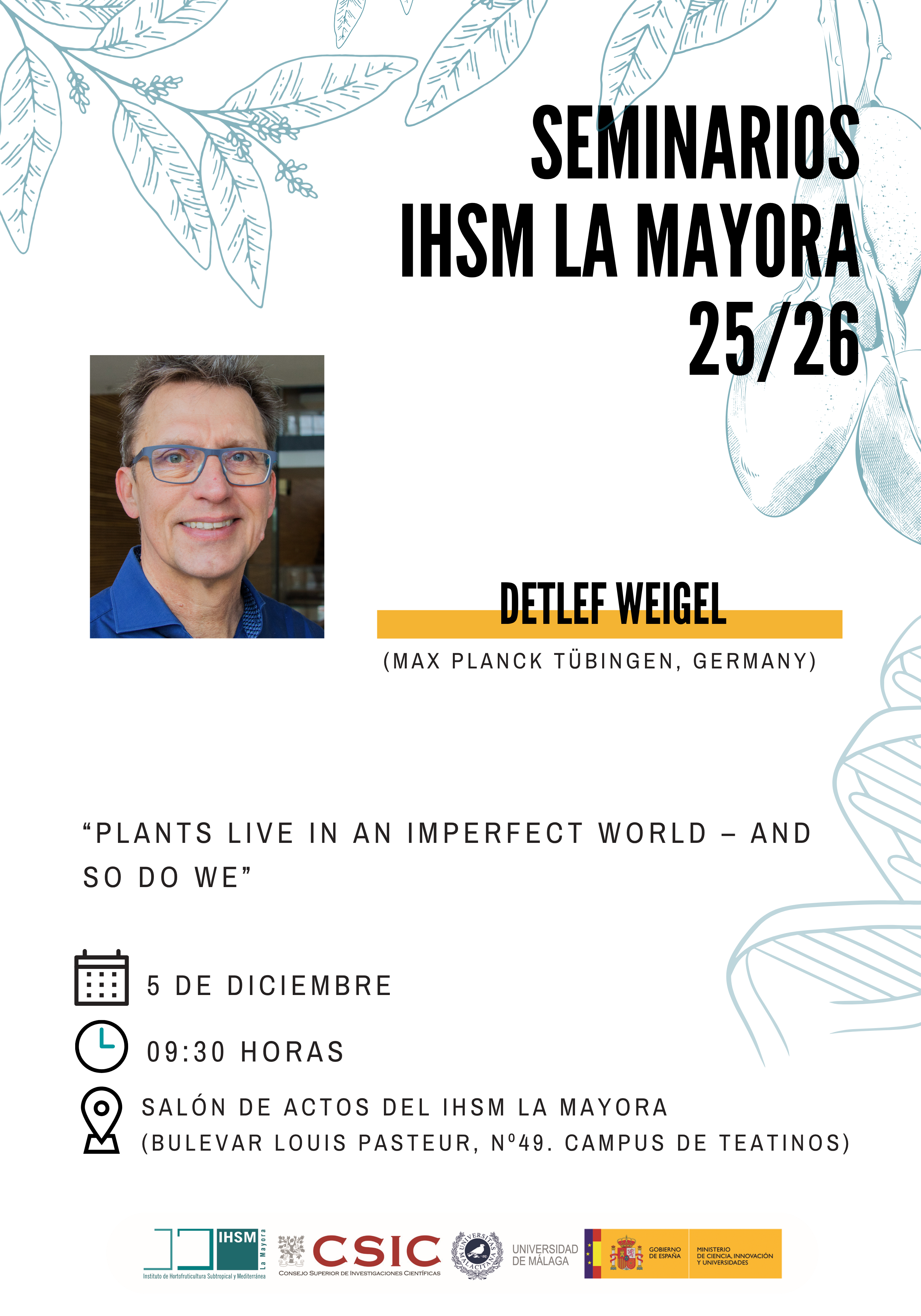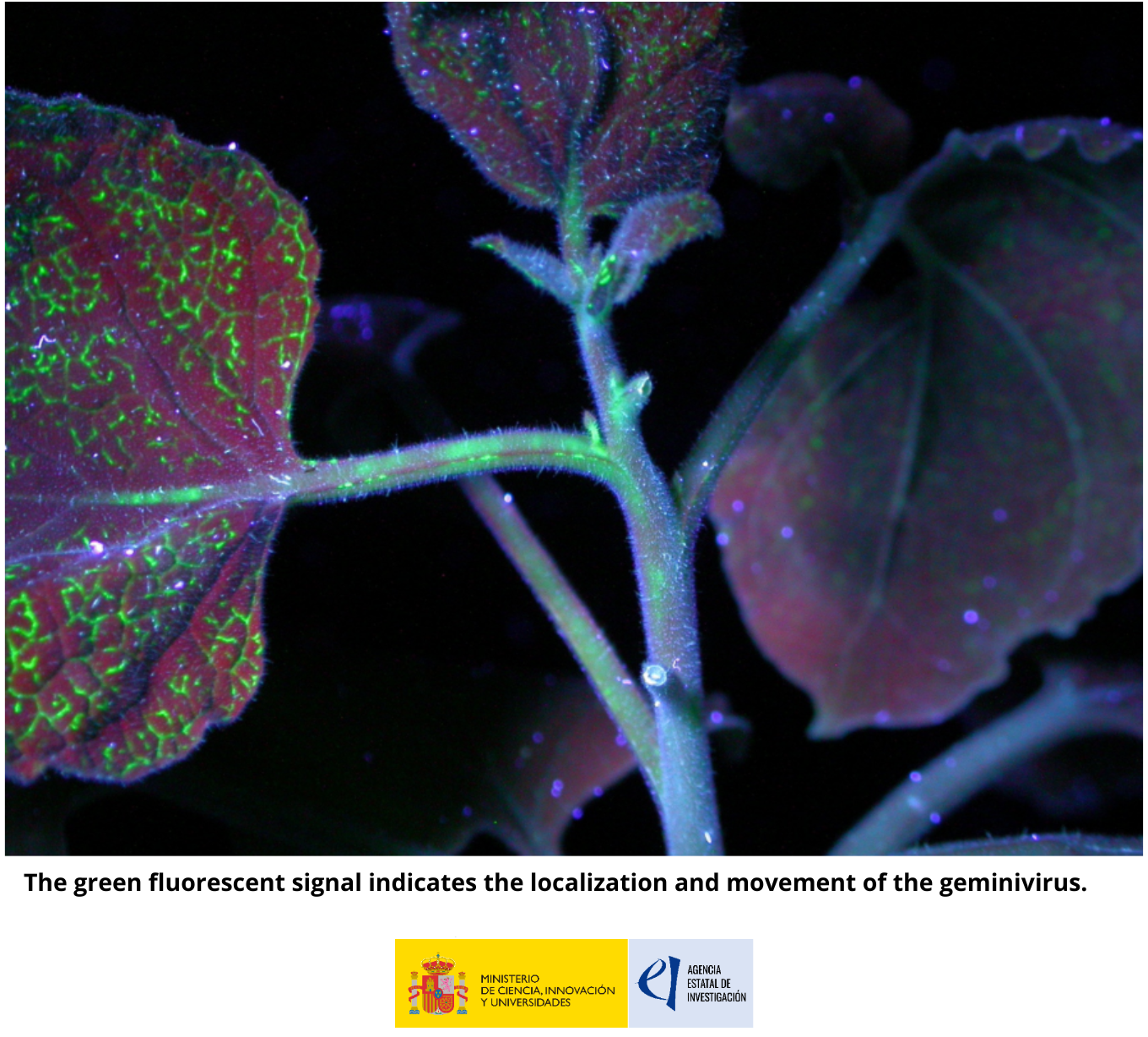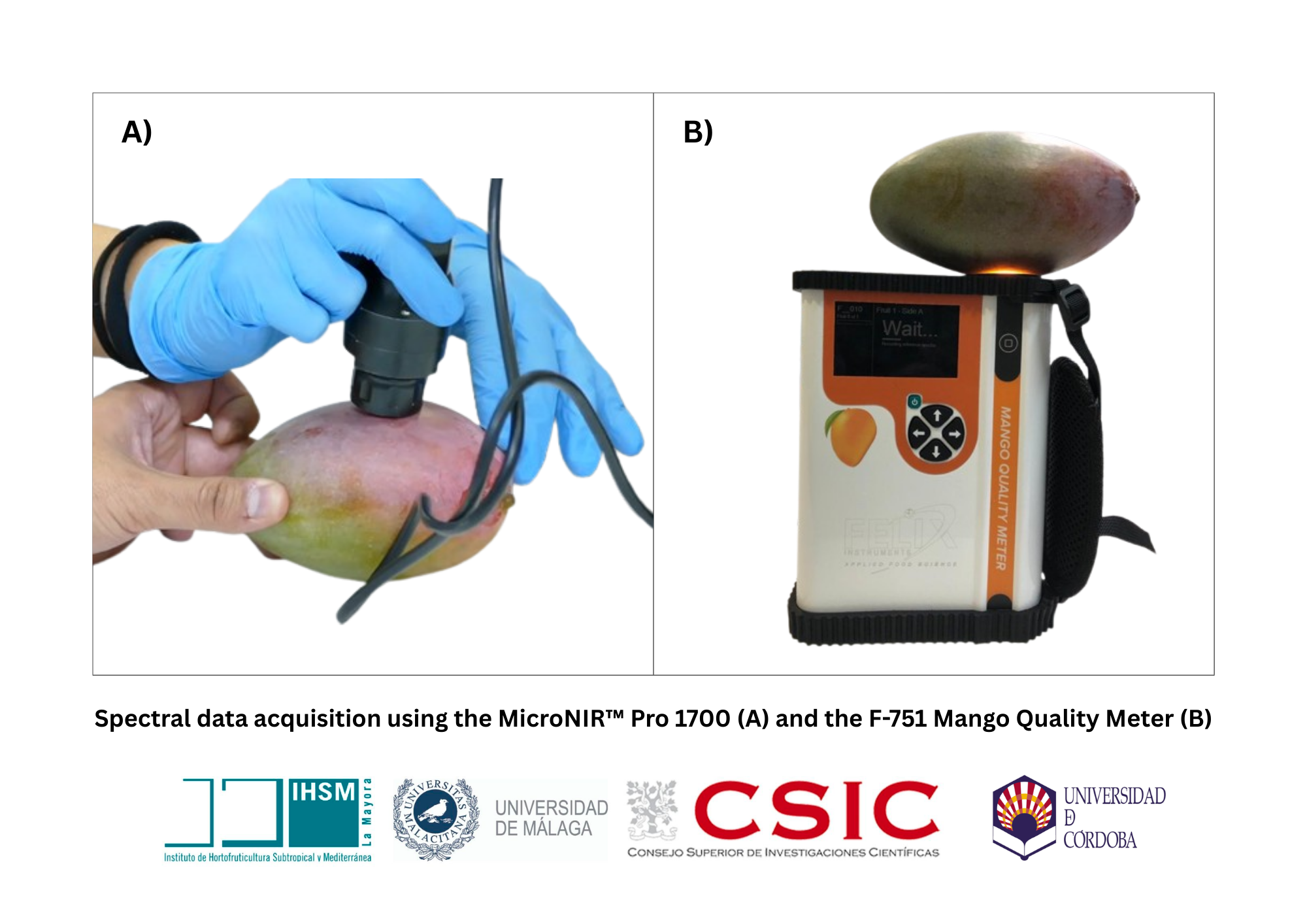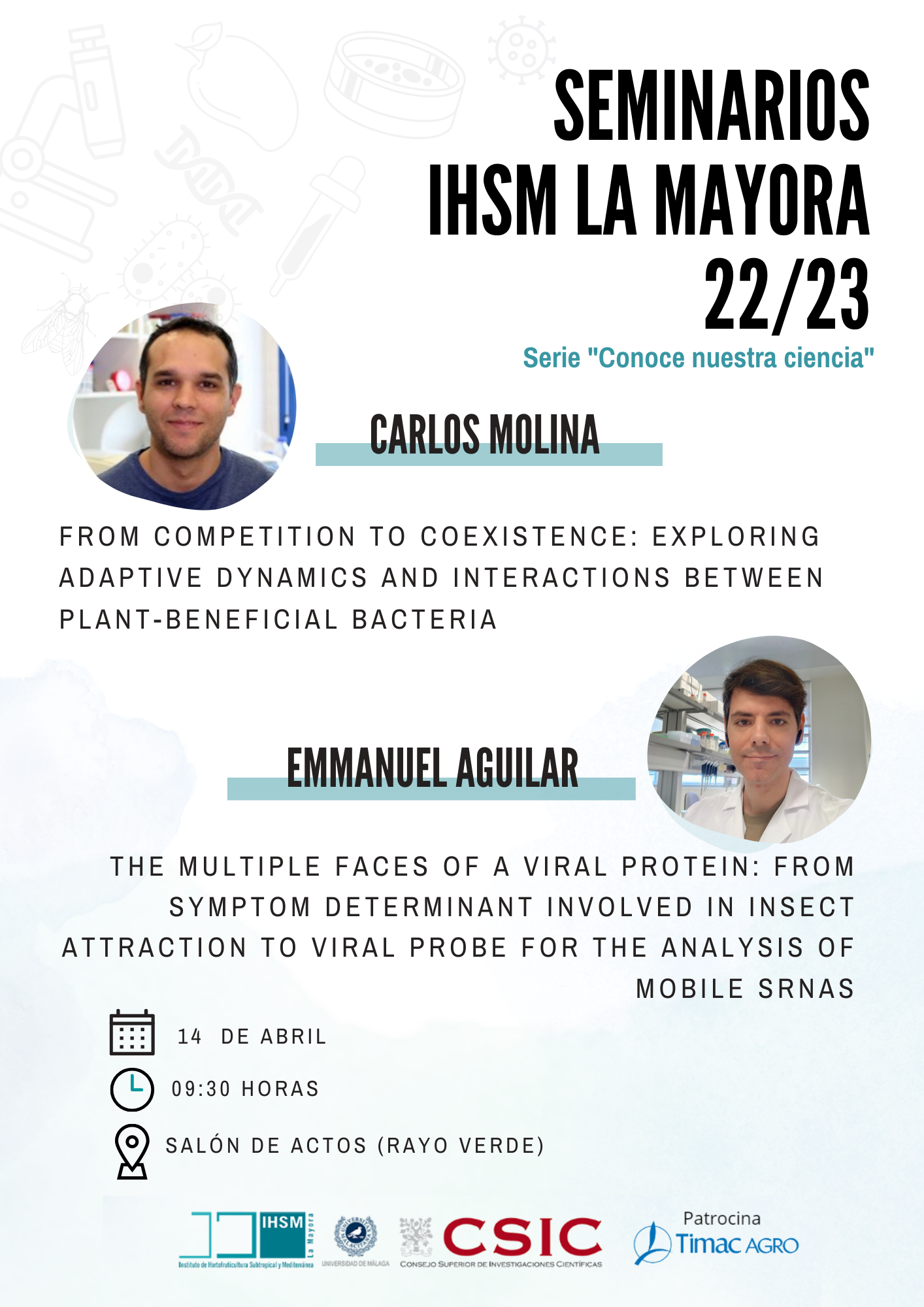
Seminarios IHSM La Mayora - Carlos Molina | Emmanuel Aguilar (IHSM La Mayora UMA-CSIC)
Abstract Carlos Molina Bacteria that are members of the plant holobiont can be classified in beneficial, neutral or pathogenic according to their nutritional relationship with the plant host. These bacteria are continuously interacting with the host and the other microbes living in the same ecological niche using a wide array of defensive and offensive mechanisms to fight for nutrients and space. Bacillus is a soil dwelling bacterium widely distributed in nature and with well-defined beneficial contribution to the wealth of the plants. This bacterial species, as many others, organizes in communities called biofilms, where cells are hold together by a self-secreted extracellular matrix (ECM) which cover diverse structural and chemical functions relevant for the adaptation of the bacterial cells to the changeable environment. Part of the work performed at Diego Romero’s laboratory (Bacbiolab) aim at deciphering the chemical composition of the ECM and their ecological implications in the interactions of Bacillus with the host plants and other microbes. Results obtained from these studies have revealed the specific and complementarily roles of the diverse components of the ECM in maintaining these interactions. This knowledge is increasing our understanding of the complex ecological bacterial interactions with other microbes, and how these can be potentially manipulated to increase their benefit to plants, and thus their inclusion on programs of sustainable crop protection and production. Abstract Emmanuel Aguilar: During compatible plant-virus interactions, viruses can interfere with the normal developmental program of their hosts, leading to the appearance of phenotypes that we usually identify as ‘’symptoms of infection’’ (leaf curling and yellowing, stunting, dwarfism, necrosis). Despite their relevance, the molecular mechanisms underlying symptom induction and their biological meaning remain poorly understood. By using tomato yellow leaf curl virus (TYLCV, Geminivirus) as model, we have isolated C4 as the main protein responsible for the induction of TYLCV-associated symptoms in tomato. C4, by mimicking a host protein domain, the CCL domain (Conserved C-termini in LAZY1 family), outcompetes endogenous interactors of the RLDs (RCC1-like domain-containing plant proteins), modifying hormone signaling and vesicle trafficking, which correlates with the manifestation of symptoms. Surprisingly, we observed that appearance of C4-mediated symptoms in tomato plays no major role in viral replication nor movement, but they serve as attractants for the insect vector, the whitefly Bemisia tabaci, which preferentially feeds on tomato plants exhibiting strong symptoms of viral infection. These results suggest that symptoms may have evolved as a strategy to promote viral transmission by the insect vector. In addition, the C4 protein has previously been shown to interfere specifically with the cell-to-cell movement of RNAi, affecting neither accumulation nor activity of the small RNAs (sRNA). Because of these properties, we applied C4 as a new and powerful tool to analyze mobile sRNAs and their targets: by using C4-expressing plants, out-of-location mobile sRNAs as well as increased levels of their unprocessed targets were expected to be easily detected, when compared to wild type plants. We have used C4 to interfere with the movement of miR165 and miR166, two mobile microRNAs (miRNAs) responsible for the establishment of a proper root xylem patterning in Arabidopsis. By doing so, we have uncovered the bases for the regulation of the cell-to-cell movement of miRNAs and its role in tissue patterning, confirming at the same time the feasibility of using C4 as viral probe.

